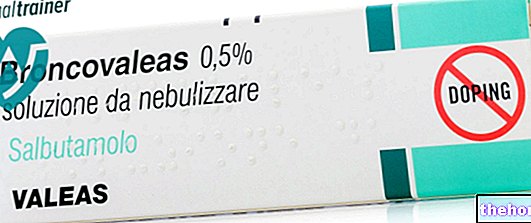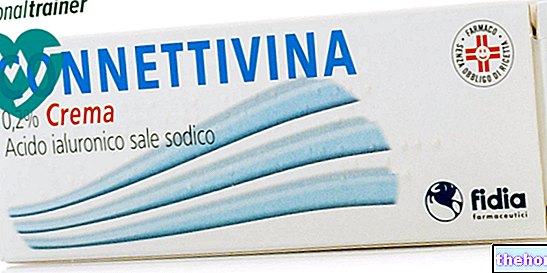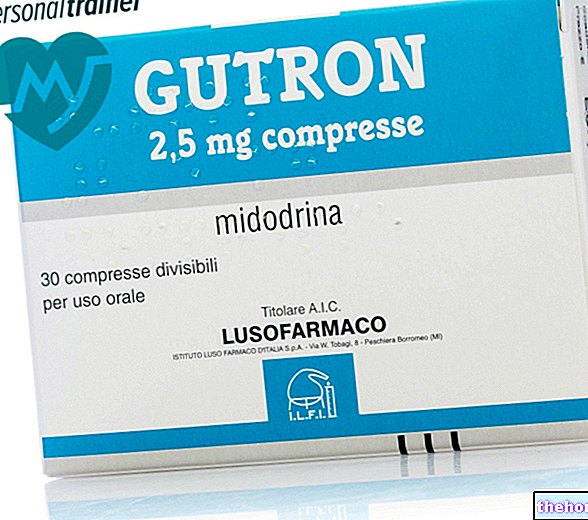Active ingredients: Bifonazole
Canesten Unidie 1% cream
Why is Canesten Unidie used? What is it for?
Canesten Unidie is an antifungal (antifungal), for broad spectrum dermatological use; that is, it acts locally, eliminating skin fungi.
Canesten Unidie is used to treat mycoses (fungal infections) such as: mycosis of the foot and hand, onychomycosis (fungal infections of the nails); mycosis of the trunk (torso) and skin folds; pityriasis versicolor, superficial candidiasis.
What is pityriasis versicolor?
Pityiriasis versicolor is a "fungal infection characterized by changes in skin pigmentation, with irregular, well demarcated and flat spots of light brown color if on light or light skin compared to the surrounding healthy skin if of dark skin because the yeast interferes with the production of melanin.
What is superficial candidiasis?
Superficial candidiasis is a "fungal infection caused by a fungus called Candida that affects the superficial layers of the skin and mucous membranes.
Talk to your doctor if you feel no better or if your symptoms get worse.
Contraindications When Canesten Unidie should not be used
Do not use Canesten Unidie
- if you are allergic to the active substance or any of the other ingredients of this medicine (listed in section 6)
Precautions for use What you need to know before taking Canesten Unidie
Talk to your doctor or pharmacist before using Canesten Unidie:
- if symptoms persist after treatment.
- in case of ascertained hypersensitivity (allergy) with other antifungals belonging to the same category (eg econazole, clotrimazole, miconazole), since in this case Canesten Unidie should be used with caution.
Do not use for prolonged treatments, without first consulting your doctor or pharmacist.
Avoid contact with eyes.
Do not swallow.
Consult your doctor if the disorder occurs repeatedly or if you notice any change in its characteristics.
Children and adolescents
Children: in pediatric age, the safety and efficacy of the drug have not been demonstrated; until sufficient data are acquired, the use of the product in such subjects is not indicated.
Interactions Which drugs or foods may change the effect of Canesten Unidie
Tell your doctor or pharmacist if you are using, have recently used or might use any other medicines.
Patients using Canesten Unidie concomitantly with warfarin (a drug to thin the blood), should be monitored appropriately, as the thinning effect may increase.
Warnings It is important to know that:
Pregnancy, breastfeeding and fertility
If you are pregnant or breast-feeding, think you may be pregnant or are planning to have a baby, ask your doctor or pharmacist for advice before taking this medicine.
Pregnancy
The use of bifonazole in the first trimester of pregnancy should be avoided.
Feeding time
It is not known whether bifonazole is excreted in human milk. Breastfeeding should be discontinued during treatment with bifonazole.
Fertility
Non-clinical studies have shown no impairment of male or female fertility.
Driving and using machines
Canesten Unidie has no or negligible influence on the ability to drive and use machines.
Canesten Unidie contains cetylstearyl alcohol
Canesten can cause local skin reactions (e.g. contact dermatitis).
Canesten Unidie contains sorbitan monostearate. It can cause local skin reactions (e.g. contact dermatitis).
Canesten Unidie contains polysorbate 60. May cause local skin reactions (eg contact dermatitis).
Health education notes
To prevent mycoses and any subsequent fungal infections it is useful to follow some hygiene-sanitary rules, such as:
- in public places such as swimming pools, gyms, hotel rooms, etc., avoid walking barefoot;
- for those who practice sports it is important to use breathable and comfortable footwear, whose insoles should be changed or washed periodically;
- limit the use of clothing containing synthetic fibers;
- submit dogs and cats to veterinary examinations before welcoming them into the home environment;
- if a family member develops mycosis, it is advisable to observe additional hygiene precautions, such as keeping clothes separate and washing them at a high temperature.
Dose, Method and Time of Administration How to use Canesten Unidie: Posology
Always use this medicine exactly as described in this leaflet or as directed by your doctor or pharmacist. If in doubt, consult your doctor or pharmacist.
Unless otherwise prescribed by a doctor, Canesten Unidie should be applied in small quantities to the infected parts only once a day, preferably in the evening before going to bed.
A small amount of cream is generally sufficient to treat a surface roughly equal to the palm of the hand.
It is advisable not to interrupt therapy immediately after the disappearance of symptoms and / or signs of fungal infection, but to adhere to the following average treatment times, depending on the type of infection, the extent and location of the infection itself :
Foot mycosis (Tinea pedis, tinea pedum interdigitalis) 3 weeks
Mycosis of the trunk, hands and skin folds (Tinea corporis, tinea manuum, tinea inguinalis) 2-3 weeks
Pityriasis versicolor 2 weeks
Superficial candidiasis 2-4 weeks Canesten Unidie is electively indicated for the treatment of uncovered skin areas.
Canesten Unidie is for external use only and should not be put in the mouth or swallowed.
Use in children and adolescents
the use of the product in such subjects is not indicated.
Overdose What to do if you have taken too much Canesten Unidie
If you use more Canesten Unidie than you should
In case of accidental ingestion of Canesten Unidie, notify your doctor immediately or go to the nearest hospital. There are no known cases of overdose.
If you forget to use Canesten Unidie
Do not use a double dose to make up for a forgotten dose.
Continue therapy as per the recommended dosage.
If you stop taking Canesten Unidie
No effect.
If you have any further questions on the use of this medicine, ask your doctor or pharmacist.
Side Effects What are the side effects of Canesten Unidie
Like all medicines, this medicine can cause side effects, although not everybody gets them.
The following undesirable effects arise from spontaneous reports, therefore it is not always possible to define their frequency
Pain and swelling at the administration site, allergic and contact dermatitis, rash) hives, blistering itching and burning sensation, exfoliation (dry skin) eczema skin irritation or maceration,
These side effects usually subside after stopping treatment
Reporting of side effects
If you get any side effects, talk to your doctor or pharmacist. This includes any possible side effects not listed in this leaflet. You can also report side effects directly via the website http://www.agenziafarmaco.gov.it/it/responsabili. By reporting side effects you can help provide more information on the safety of this medicine.
Expiry and Retention
Expiry: see the expiry date printed on the package
The expiry date refers to the product in intact and correctly stored packaging.
Being a multi-dose preparation, repeated opening of the container can expose the medicine to microbial contamination, proliferation and / or chemical-physical degradation; therefore the medicine should no longer be used after 16 months from the first opening.
Do not use this medicine after the expiry date which is stated on the package.
The expiry date refers to the last day of that month.
Store at a temperature not exceeding 25 ° C
Do not use this product if you notice visible signs of deterioration.
Do not throw away any medicines via wastewater or household waste.
Ask your pharmacist how to throw away medicines you no longer use. This will help protect the environment.
Keep this medicine out of the sight and reach of children
Composition and pharmaceutical form
What Canesten Unidie contains
The active ingredient is-bisphonazole. The other ingredients are: sorbitan monostearate, polysorbate 60, spermaceti, cetylstearyl alcohol, octyldodecanol, benzyl alcohol, purified water.
What Canesten Unidie looks like and contents of the pack
Canesten Unidie comes in the form of a cream. The contents of the package is a 30 g tube.
Source Package Leaflet: AIFA (Italian Medicines Agency). Content published in January 2016. The information present may not be up-to-date.
To have access to the most up-to-date version, it is advisable to access the AIFA (Italian Medicines Agency) website. Disclaimer and useful information.
01.0 NAME OF THE MEDICINAL PRODUCT
CANESTEN UNIDIE 1% CREAM
02.0 QUALITATIVE AND QUANTITATIVE COMPOSITION
1% cream
100 g of cream contain:
active principle:
bifonazole 1 g.
Excipients with known effects: cetylstearyl alcohol, sorbitan monostearate, polysorbate 60.
For the full list of excipients see 6.1.
03.0 PHARMACEUTICAL FORM
Cream.
04.0 CLINICAL INFORMATION
04.1 Therapeutic indications
Treatment of dermatomycoses caused by dermatophytes, saccharomycetes, other pathogenic fungi: mycosis of the foot and hand, mycosis of the trunk (tinea corporis), mycosis of the skin folds (tinea inguinalis), onychomycosis, pityriasis versicolor, superficial candidiasis.
04.2 Posology and method of administration
For a complete recovery, the controlled and sufficiently prolonged use of Canesten Unidie is essential.
However, it is advisable not to interrupt therapy immediately after the disappearance of the acute inflammatory manifestations and subjective symptoms, but to adhere to the following average treatment times, depending on the type of infection, the extent and location of the infection itself:
Method of administration
Unless otherwise prescribed, Canesten Unidie should be applied in small quantities to the infected parts with a light massage once a day, preferably in the evening before going to bed.
A small amount of cream is generally sufficient to treat a surface roughly equal to the palm of the hand.
Pediatric population
In children, the safety and efficacy of Canesten Unidie have not been demonstrated; until sufficient data are acquired, the use of the product in such individuals is not indicated.
04.3 Contraindications
Hypersensitivity to the active substance or to any of the excipients, listed in section 6.1.
04.4 Special warnings and appropriate precautions for use
The use, especially if prolonged, of products for topical use, can give rise to sensitization phenomena that manifest themselves with redness and itching; in this case, it is necessary to interrupt the treatment and institute a suitable therapy.
The same will be done in case of development of resistant microorganisms.
Patients with known hypersensitivity reactions to other imidazole antifungals (e.g. econazole, clotrimazole, miconazole) should use medicinal products containing bifonazole with caution.
04.5 Interactions with other medicinal products and other forms of interaction
Available data suggest a possible interaction between topical bifonazole and warfarin with increased prothrombin time.
If Canesten Unidie is used in warfarin-treated patients, they should be monitored appropriately.
04.6 Pregnancy and lactation
Pregnancy
Preclinical safety data and human pharmacokinetic data do not give any indication on the effects on mother and child when using bifonazole during pregnancy (see section 5.3).
It is best to avoid the use of bifonazole during the first trimester of pregnancy.
Feeding time
Excretion into milk has been studied in animals. Available pharmacodynamic / toxicology data in animals have shown that bifonazole and its metabolites pass into breast milk (see section 5.3).
It is not known whether bifonazole is excreted in human milk.
Breastfeeding should be discontinued during treatment with bifonazole.
Fertility
Preclinical studies have not shown impairment of male or female fertility (see section 5.3).
04.7 Effects on ability to drive and use machines
Canesten Unidie has no or negligible influence on the ability to drive and use machines
04.8 Undesirable effects
The following adverse reactions are derived from post-marketing spontaneous reports and it is not possible to define their frequency.
General disorders and administration site conditions
Pain on administration site, peripheral edema (on administration site).
Skin and subcutaneous tissue disorders
Contact dermatitis, allergic dermatitis, erythema, pruritus, rash, hives, blisters, skin exfoliation, eczema, dry skin, skin irritation, skin maceration, burning sensation.
These side effects are reversible after discontinuation of treatment.
Reporting of suspected adverse reactions
Reporting of suspected adverse reactions occurring after authorization of the medicinal product is important as it allows continuous monitoring of the benefit / risk balance of the medicinal product. Healthcare professionals are asked to report any suspected adverse reactions via the national reporting system. "address https://www.aifa.gov.it/content/segnalazioni-reazioni-avverse.
04.9 Overdose
• There are no reported cases of overdose.
05.0 PHARMACOLOGICAL PROPERTIES
05.1 Pharmacodynamic properties
Pharmacotherapeutic group: imidazole and triazole derivatives.
ATC code: DO1AC10.
Bifonazole inhibits ergosterol biosynthesis on two different levels, distinguishing itself from both other azole derivatives and other antifungals which act only at a single level. Inhibition of ergosterol synthesis leads to structural and functional damage to the cytoplasmic membrane of the fungus.
Canesten Unidie exerts its action against infections sustained by dermatophytes, saccharomyces (yeasts), molds and other pathogenic fungi, such as Malassezia furfur.
The MIC value for the types of fungi mentioned is in the range below 0.062-4 (-16) mcg / ml of substrate. Bifonazole exhibits pronounced fungicidal activity against dermatophytes, in particular Tricophyton spp. A complete fungicidal effect is already achieved at a concentration of about 5 mcg / ml and after an exposure of 6 h. On yeasts, eg Candida, at a concentration of 1-4 mcg / ml the action of bifonazole is primarily fungistatic, while in concentrations of 20 mcg / ml it is fungicidal.
Variants of primary resistance of susceptible fungal species are very rare.
The research does not provide evidence for the development of secondary resistance in primary susceptible species.
05.2 Pharmacokinetic properties
Bifonazole penetrates the infected skin layers well.
6 h after administration the concentrations in the various layers of the skin reach from 1000 mcg / cm3 in the outer layers of the epidermis (stratum corneum) to 5 mcg / cm3 in the papillary layer. All the concentrations determined are thus in a range of antifungal activity in vitro.
The residence time in the skin, measured by the protective action against infection in guinea pigs, is 48-72 hours.
Pharmacokinetic studies after topical application to intact human skin have shown that only a small amount of bifonazole is absorbed (0.6-0.8% of the dose); the resulting serum level concentrations were always below the limit of detection (i.e.
Bifonazole crosses the placental barrier in rats.
05.3 Preclinical safety data
Preclinical data are based on conventional single dose toxicity and genotoxicity studies.
Hepatic enzyme induction effects have been observed with doses above 50mg / kg for up to 13 weeks); repeated doses equal to or greater than 3 mg / kg have determined clear signs of suffering at the level of various organs and, in particular, of hepatic adipose degeneration.
However, the exposure levels are higher than the maximum exposure of relevance to clinical use.
Bifonazole did not demonstrate mutagenic effects in the following tests: the "Salmonella / microsome", the "Micronucleus test" and the "dominant lethal" test.
Studies in rabbits were performed to evaluate dermal tolerability. After subacute topical application of bifonazole cream (corresponding to 3mg / kg of Bifonazole) for 3 weeks, a mild irritant effect (swelling) was observed. In the primary irritation test, mucosal and ocular skin tolerability was good.
Carcinogenicity studies have not been conducted with bifonazole.
No impairment of male and female fertility (in rats) was observed at oral doses above 40mg / kg.
In reproductive toxicology studies in rabbits, the oral dose of 30 mg / kg body weight and higher doses gave embryo and fetotoxic results including lethality. In rats, bifonazole at oral doses up to 100 mg / kg is not embryotoxic but delays the development of the fetal skeleton, possibly as a side effect of maternal toxicity (weight reduction).
Given the low absorption of the active ingredient through the skin, these results have little relevance for clinical use.
Studies in rats have shown that bifonazole crosses the placental barrier and is excreted in milk.
06.0 PHARMACEUTICAL INFORMATION
06.1 Excipients
1% cream:
sorbitan monostearate;
polysorbate 60;
spermaceti;
cetylstearyl alcohol;
octyldodecanol;
benzyl alcohol;
purified water.
06.2 Incompatibility
Not relevant.
06.3 Period of validity
5 years.
Being a multi-dose preparation, repeated opening of the container can expose the medicine to microbial contamination, proliferation and / or chemical-physical degradation; therefore the medicine should no longer be used after 16 months from the first opening.
06.4 Special precautions for storage
Store at a temperature not exceeding 25 ° C
06.5 Nature of the immediate packaging and contents of the package
Aluminum tube internally protected with epoxy resins.
Cream: tube of 30 g.
06.6 Instructions for use and handling
Avoid contact with eyes.
07.0 MARKETING AUTHORIZATION HOLDER
Bayer S.p.A. - Viale Certosa 130 - Milan
08.0 MARKETING AUTHORIZATION NUMBER
Canesten Unidie AIC 026045029
09.0 DATE OF FIRST AUTHORIZATION OR RENEWAL OF THE AUTHORIZATION
20.08.1985 31/5/2010
10.0 DATE OF REVISION OF THE TEXT
AIFA Determination of: February 2015




























